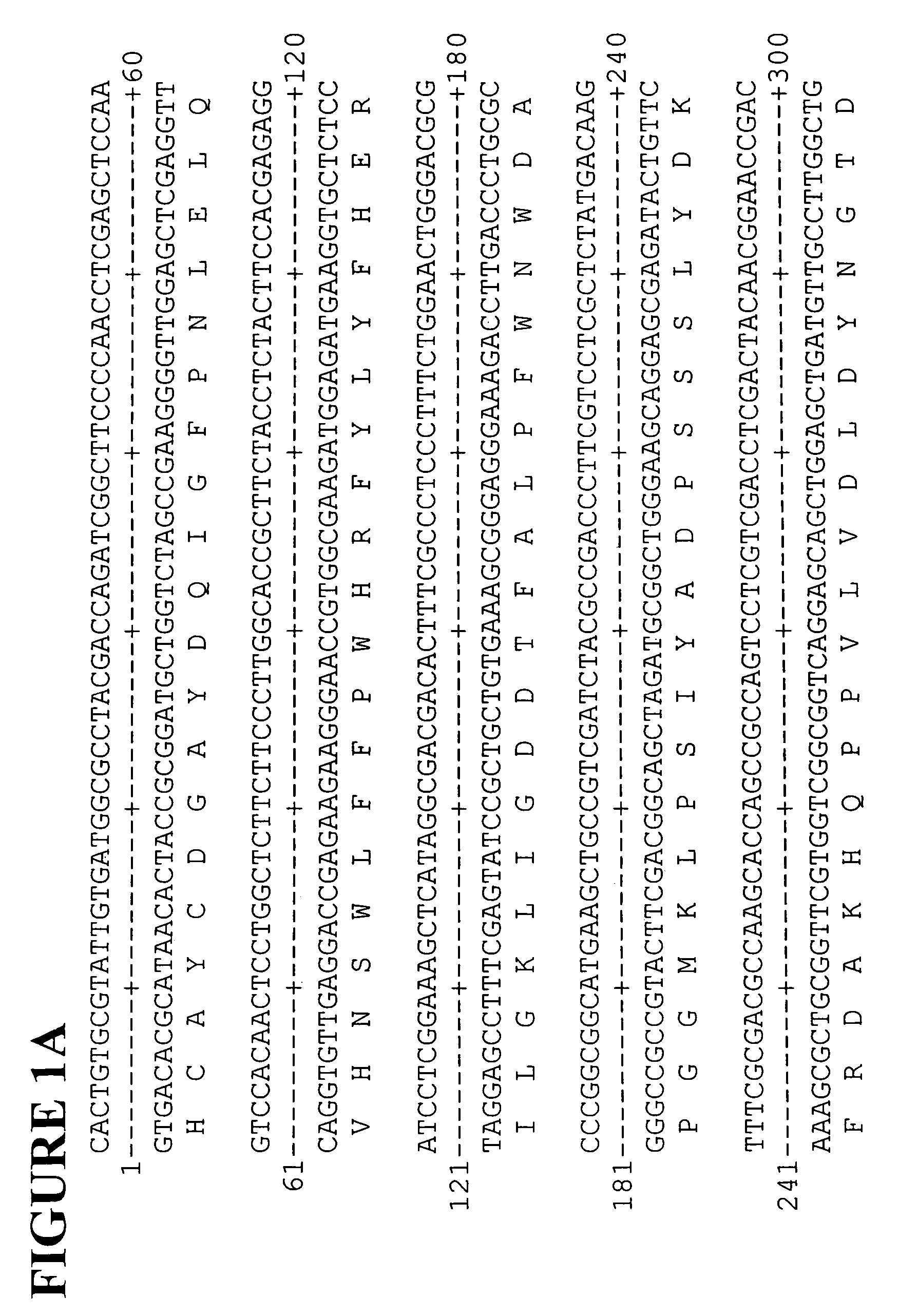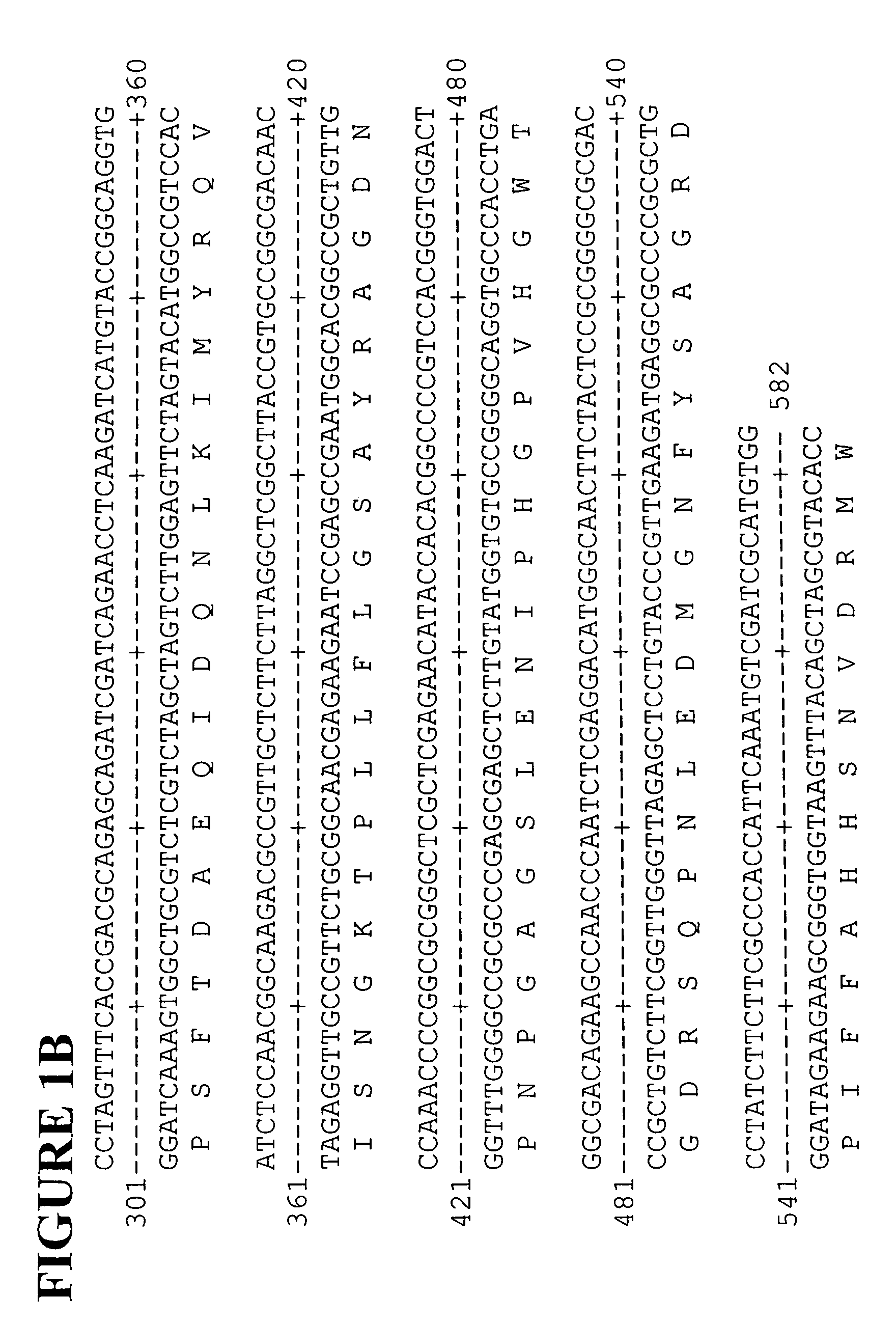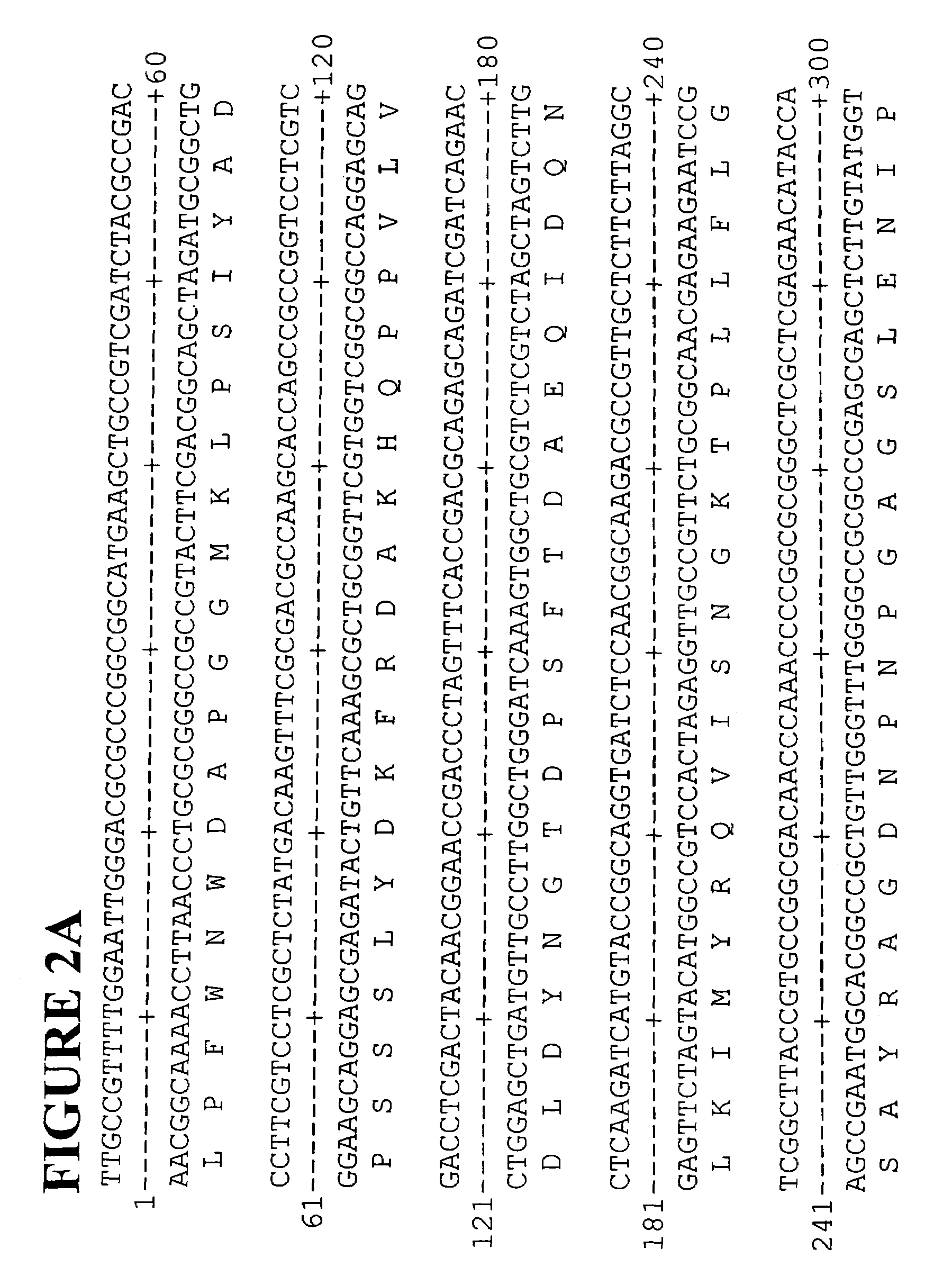Polyphenol oxidase genes from lettuce
a technology of polyphenol oxidase and genes, applied in the field of plant genetic sequence, can solve problems such as difficult to resolve ppo fragments, and achieve the effect of reducing browning
- Summary
- Abstract
- Description
- Claims
- Application Information
AI Technical Summary
Benefits of technology
Problems solved by technology
Method used
Image
Examples
example 1
Cloning Lettuce PPO Genes
[0247]Messenger RNA (mRNA) was isolated directly from young leaves of lettuce using the PolyATtract 1000 system from Promega Corporation. First strand cDNA was synthesised with reverse transcriptase using a Timesaver cDNA Synthesis Kit (Pharmacia Biotech) utilising an oligo-dT primer adapter as described in Frohman, M A (1990) in “PCR Protocols: A Guide to Methods and Applications” (M A Innis, D H Gelfrand, J J Sninsky and T J White, eds) Academic Press, New York pp 28-38, the entire disclosure of which is incorporated herein by reference:
[0248]
B26:(SEQ ID NO: 38)5′-GACTCGAGTCGACATCGATTTTTTTTTTTTTTTTT-3′
[0249]Oligonucleotide primers were designed based on known plant PPO DNA sequences in the conserved regions of the gene which encode the copper binding sites, CuA and CuB as described in Dry, IB and Robinson, SP (1994) “Molecular cloning and characterisation of grape berry polyphenol oxidase”, Plant Molecular Biology 26: 495-502, the entire disclosure of whic...
example 2
Cloning Banana PPO Genes
[0261]Total RNA was isolated from young banana fruit. Fruit tissue (3 g) was frozen and ground to a fine powder in liquid nitrogen with a coffee grinder then added to 20 ml of extraction buffer (2% hexadecyltrimethylammonium bromide (CTAB), 2% polyvinyl pyrolidone, 100 mM Tris-HCl, pH 8.0, 25 mM EDTA, 2 M NaCl, 0.05% spermidine, 2% β-mercaptoethanol) at 65° C. The extract was mixed with 20 ml of chloroform / IAA then centrifuged for 20 minutes at 5,000 RPM and the aqueous phase was re-extracted with chloroform / IAA. The aqueous phase was filtered through Miracloth and 0.25 volumes of 10 M LiCl were added then the sample was incubated overnight at 4° C. before centrifuging for 20 minutes at 8,000 RPM. The supernatant was removed and the pellet was resuspended in 0.5 ml of 1 M NaCl, 0.5% SDS, 10 mM Tris, pH 8.0, 1 mM EDTA. The RNA was extracted once with an equal volume of chloroform / IAA and 2 volumes of ethanol was added. After incubation for 40 mins at −70° C. t...
example 3
Cloning Banana Peel PPO genes
[0276]Total RNA was isolated from the peel of young banana fruit. Fruit tissue (3 g) was frozen and ground to a fine powder in liquid nitrogen with a coffee grinder then added to 20 ml of extraction buffer. (2% hexadecyltrimethylammonium bromide (CTAB), 2% polyvinyl pyrrolidone, 100 mM Tris-CHI, pH 8.0, 25 mM EDTA, 2 M NaCl, 0.05% spermidine, 2% β-mercaptoethanol) at 65° C. The extract was mixed with 20 ml of chloroform / IAA then centrifuged for 20 minutes at 5,000 RPM and the aqueous phase was re-extracted with chloroform / IAA. The aqueous phase was filtered through Miracloth and 0.25 volumes of 10 M LiCl were added then the sample was incubated overnight at 4° C. before centrifuging for 20 minutes at 8,000 RPM. The supernatant was removed and the pellet was resuspended in 0.5 ml of 1 M NaCl, 0.5% SDS, 10 mM Tris, pH 8.0, 1 mM EDTA. The RNA was extracted once with an equal volume of chloroform / IAA and 2 volumes of ethanol was added. After incubation for 4...
PUM
| Property | Measurement | Unit |
|---|---|---|
| volume | aaaaa | aaaaa |
| pH | aaaaa | aaaaa |
| pH | aaaaa | aaaaa |
Abstract
Description
Claims
Application Information
 Login to View More
Login to View More - R&D
- Intellectual Property
- Life Sciences
- Materials
- Tech Scout
- Unparalleled Data Quality
- Higher Quality Content
- 60% Fewer Hallucinations
Browse by: Latest US Patents, China's latest patents, Technical Efficacy Thesaurus, Application Domain, Technology Topic, Popular Technical Reports.
© 2025 PatSnap. All rights reserved.Legal|Privacy policy|Modern Slavery Act Transparency Statement|Sitemap|About US| Contact US: help@patsnap.com



